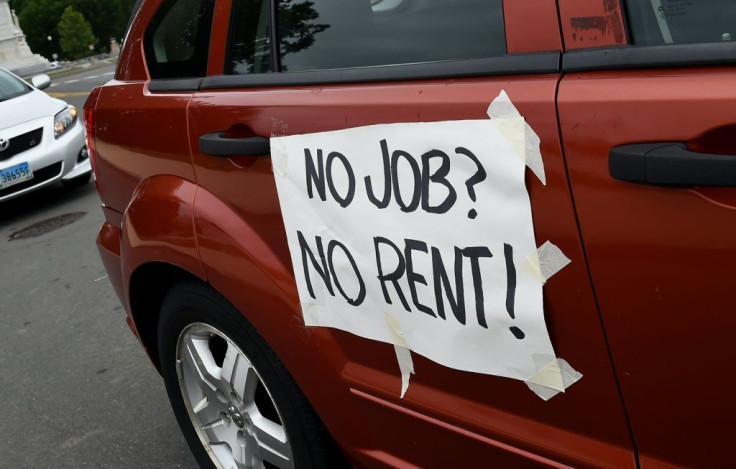Weekly Unemployment Claims Fall Slightly To Just Over 1 Million

Slightly more than 1 million Americans filed for unemployment compensation last week, down 98,000 from the week before, the Labor Department reported Thursday. The Bureau of Labor Statistics pegged the unemployment rate for the week that ended Aug. 15 at 9.9%.
The number of initial claims has hovered around the 1 million mark since April, down from a high of 10 million, as the coronavirus pandemic forced businesses to close and lay off workers. The unemployment rate for the full month of August was scheduled for release Sept. 4.
BLS said as of next week, it would change the way it compiles statistics for calculating seasonally adjusted rates, switching from using multiplicative factors to additive factors.
“Multiplicative seasonal adjustment factors can result in systematic over- or under-adjustment of the series; in such cases, additive seasonal adjustment factors are preferred since they tend to more accurately track seasonal fluctuations in the series and have smaller revisions,” BLS said.
The number of insured unemployed for the week ended Aug. 15 fell 223,000 to 14.5 million.
Unadjusted claims last week totaled 821,591, down 67,958 or 7.6% from the previous week. The number had been expected to increase by 1.4% and compares to 176,867 claims for the comparable week in 2019.
More than 27 million workers claimed unemployment benefits for the week that ended Aug. 8, down more than 1 million from the previous week. That compares to 1.64 million claimants for the comparable week in 2019.
“Six months into the pandemic, the leading issue is not new layoffs but rather the exceedingly slow pace by which workers are being rehired. While most unemployed individuals still consider themselves to be subject to temporary layoffs, there is no end in sight,” unemployment expert Andrew Stettner of the Century Foundation told International Business Times in an email.
“While regular claims are falling, benefits for those out of work for more than 26 weeks have steadily grown and now are 50 percent higher than at the beginning of July.”
Mark Hamrick, senior economic analyst for Bankrate told IBTimes there has been “no substantial easing of historically high demand for unemployment assistance.”
“Not only are jobless claims still elevated at levels unseen before the pandemic, this has persisted for 23 consecutive weeks with no obvious end in sight. This is in contrast to the ‘everything is fine’ theme of this week’s Republican National Convention,” Hamrick said.
Diane Swonk, chief economist for Grant Thornton, predicted claims next week will rise because of the BLS revisions taking effect.
Extended benefits were available in all 50 states, the District of Columbia and Puerto Rico. Nearly 11 million people claimed pandemic unemployment assistance in 49 states while 1.4 million claimed pandemic emergency unemployment compensation benefits. The pandemic unemployment compensation program ran out July 31.
Unemployment was highest in Hawaii, Puerto Rico, Nevada, California and New York.
For the week ended Aug. 15, the biggest increases in claims were in New Jersey, Florida, New York, Texas and Tennessee while the biggest decreases were in California, Nevada, Georgia, Puerto Rico and Pennsylvania.
© Copyright IBTimes 2025. All rights reserved.






















